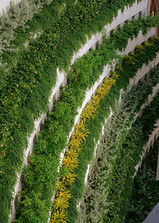
A MICROSITE BY THE INSTITUTE OF LANDSCAPE ARCHITECTS MALAYSIA (ILAM)
What are
Nature-based
Solutions?
Nature-based Solutions (NBS) leverage the power of healthy ecosystems to address societal challenges, protect communities, and enhance biodiversity. By working with nature, NBS include restoring ecosystems, managing resources sustainably, and integrating green spaces into urban areas. These solutions tackle issues like flooding, heat islands, and climate resilience, creating healthier environments for people and the planet.

MyNBS Digest

MyNBS Digest 2025:
Malaysia’s 20 Leading Nature-based Solutions in Landscape Architecture celebrates twenty exemplary projects that embody the nation’s commitment to designing with nature. Curated by the Institute of Landscape Architects Malaysia (ILAM), this publication highlights how Malaysian landscape architects are advancing climate resilience, biodiversity restoration, and community well-being through innovative Nature-based Solutions. Each featured project showcases a unique integration of ecology and design-reflecting Malaysia’s leadership in shaping sustainable, living landscapes for the future.

The Institute of Landscape Architects Malaysia (ILAM) launched the MyNBS Initiative to promote the integration of Nature-based Solutions (NBS) in landscape architecture design. MyNBS aims to guide professionals towards creating landscapes that support sustainability, climate resilience, and community well-being.
Why Are
Nature-based
Solutions
Important?
NBS in landscape architecture involves using natural systems like wetlands for flood control, green roofs to mitigate urban heat islands, or reforested areas to enhance carbon sequestration.
These approaches not only enhance aesthetic and functional value but also deliver co-benefits, such as improving air quality, promoting mental well-being, and supporting diverse ecosystems. By embedding NBS into their projects, landscape architects can transform spaces into regenerative hubs that benefit both communities and the planet, ensuring designs are resilient and future-ready.
Climate
Resilience
NBS enhance the resilience of ecosystems, supporting societies to adapt to climate hazards such as flooding, sea-level rise, and more frequent and intense droughts,
floods, heatwaves, and wildfires.
Biodiversity Conservation
By restoring and protecting natural habitats, NBS support biodiversity, which is essential for ecosystem health and function.
Design with
Nature-based
Solutions
NBS in landscape architecture involves using natural systems like wetlands for flood control, green roofs to mitigate urban heat islands, or reforested areas to enhance carbon sequestration.
These approaches not only enhance aesthetic and functional value but also deliver co-benefits, such as improving air quality, promoting mental well-being, and supporting diverse ecosystems. By embedding NBS into their projects, landscape architects can transform spaces into regenerative hubs that benefit both communities and the planet, ensuring designs are resilient and future-ready.


Human
Well Being
NBS contribute to human health and well-being by providing clean air and water, recreational spaces, and protection against natural disasters.
Example of
Nature-based
Solutions

Urban
Green Spaces
Creating parks, green roofs, and urban forests helps reduce city heat, improve air quality, and provide recreational areas for residents. These green spaces also support urban biodiversity and can mitigate the impacts of heavy rainfall by enhancing water infiltration.

Green Roofs and Walls
Incorporating vegetation into building designs through green roofs and walls can regulate indoor temperatures, reduce energy consumption, and manage stormwater runoff. These features also enhance urban aesthetics and provide habitats for pollinators.

Wetlands
Restoration
Rehabilitating wetlands involves reestablishing natural water flow and native vegetation, which can improve water quality, provide wildlife habitat, and reduce flood risks. Wetlands act as natural sponges, absorbing and slowly releasing water.

Rewilding
Allowing natural processes to restore ecosystems can lead to the return of native species, improved ecosystem services, and increased resilience to environmental changes.

Sponge
Cities
This concept involves designing urban areas to absorb and reuse rainwater through green infrastructure, reducing flood risks and enhancing water security.

Permeable
Serfaces
Using permeable materials for sidewalks and parking lots allows rainwater to infiltrate the ground, reducing surface runoff and recharging groundwater. This approach helps prevent urban flooding and improves water quality by filtering pollutants.

Urban
Forests
Establishing and maintaining tree canopies in urban areas can lower temperatures, improve air quality, and provide shade. Urban forests also offer habitat for wildlife and contribute to the mental well-being of city dwellers.

Mangrove
Restoration
Planting mangroves along coastlines protects against erosion, storm surges, and sea-level rise. Mangroves also serve as nurseries for marine life and sequester significant amounts of carbon, contributing to climate change mitigation.
MyNBS
Promotional Video
Brochure
The Institute of Landscape Architects Malaysia (ILAM) is proud to present our latest NBS awareness video—a simple yet powerful story created to educate and inspire the general public about the importance of Nature-based Solutions (NBS).
Through an engaging journey, this video introduces how NBS—like wetlands, rooftop gardens, and urban farming—can be seamlessly integrated into our daily lives to support sustainability, climate resilience, and community well-being. This initiative is part of MyNBS, launched by ILAM to guide professionals in creating landscapes that work with nature, not against it.










